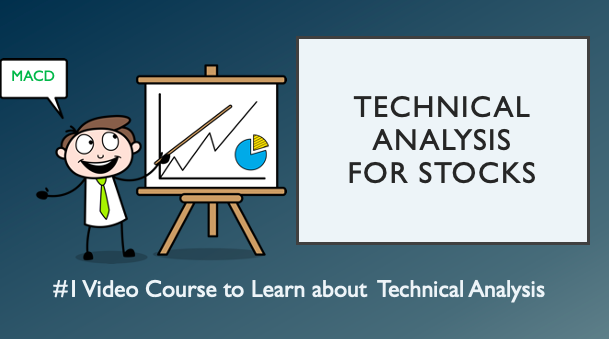Book Summary of The little book on Common Sense Investing
by John C. Bogle

What is the book about?
"The Little Book of Common Sense Investing" by John C. Bogle is centered on the concept of index investing. The book advocates for a simple, low-cost investment strategy by owning a diversified portfolio of all U.S. publicly held businesses through index funds. Bogle argues that this approach guarantees capturing your fair share of the stock market returns, in contrast to the high costs and underperformance associated with actively managed funds. The book provides insights into the long-term benefits of index investing, the impact of costs on investment returns, and the pitfalls of attempting to outperform the market.
Who should read the book?
This book is ideal for individual investors, both beginners and experienced, who are looking to understand a straightforward and effective investment strategy. It's particularly beneficial for those who are skeptical of the traditional, high-cost, actively managed funds and are seeking an investment approach that is grounded in simplicity and long-term success. Financial advisors and professionals in the investment industry may also find the book useful as it challenges the status quo of active fund management.
10 Big Ideas from the Book:
- Index Investing: The best way to ensure a fair share of market returns is through low-cost index funds that track the overall market.
- The Power of Compounding: Over time, the compounding of returns in a low-cost index fund leads to significant wealth accumulation.
- Cost Matters Hypothesis: High fees and expenses associated with active management erode investor returns significantly.
- Market Efficiency: Most actively managed funds fail to outperform the market due to costs, and the market's efficiency makes it difficult to consistently beat the index.
- Risk Reduction: Index funds reduce risks associated with individual stocks, sectors, and fund manager performance.
- The Illusion of Control: Attempting to beat the market through stock picking or market timing is more likely to reduce returns than enhance them.
- The Zero-Sum Game: For one investor to outperform, another must underperform, and when costs are considered, the average investor is guaranteed to lose to the market.
- The Virtue of Patience: Long-term investing in index funds, without frequent trading, maximizes the probability of achieving superior returns.
- The Decline of Returns: Over time, the impact of costs and taxes on investment returns can lead to a significant shortfall compared to the market's gross returns.
- Simplicity Wins: A simple investment strategy, such as buying and holding a diversified index fund, is more effective than complex strategies.
Summary of "The Little Book of Common Sense Investing"
Author: John C. Bogle
Published: 2007
Key Focus: The book advocates for index investing as the most reliable and cost-effective way to ensure that investors capture their fair share of stock market returns. Bogle emphasizes the simplicity, low costs, and long-term focus of index investing, arguing that it consistently outperforms more complex and expensive investment strategies.
Core Concept: Index Investing
Index investing involves purchasing a fund that mimics the overall performance of the stock market by holding a broad portfolio of stocks. This strategy guarantees that investors receive returns equivalent to the overall market, minus minimal costs, rather than attempting to beat the market through active management.
Key Insights from the Book
-
The Power of Compounding:
- Insight: The book highlights the significant impact of compounding returns over time. A 9.5% annual return over 50 years turns a $1 investment into $93.48, demonstrating how patient, long-term investing in an index fund can lead to substantial wealth accumulation.
- Relevant Number: 9.5% average annual return (nominal) on U.S. stocks over the past century.
-
Costs Matter Hypothesis:
- Insight: High costs, including management fees, trading costs, and taxes, drastically reduce investment returns. By minimizing these costs, investors can improve their net returns significantly.
- Relevant Number: Actively managed mutual funds typically underperform by about 2.5% per year compared to the market due to these costs.
-
The Arithmetic of Investing:
- Insight: The total return of the stock market equals the total returns of all investors before costs. After costs, most investors will underperform the market.
- Relevant Number: 0.1% - the long-term speculative return added to the market return, highlighting that nearly all market returns come from dividends and earnings growth, not market timing or stock picking.
-
Market Efficiency:
- Insight: The market is generally efficient, meaning that it's challenging to consistently outperform the market through stock selection or market timing.
- Relevant Ratio: P/E Ratio (Price-to-Earnings Ratio): Bogle points out that the average P/E ratio has been around 15 over the long term. Extreme deviations from this can signal market overvaluation (high P/E) or undervaluation (low P/E).
-
The Illusion of Control:
- Insight: Investors often believe they can control outcomes by selecting the right stocks or timing the market, but the data show that these activities more often lead to underperformance.
- Relevant Number: 85-90% - The percentage of active managers who fail to match their benchmarks, according to studies cited by Bogle.
-
Simplicity in Investing:
- Insight: Simplicity in investment strategy, such as holding a broad-based index fund, is more effective than complex strategies involving active management and frequent trading.
- Relevant Number: 0.20% - Typical expense ratio for a low-cost index fund, compared to around 1-2% for actively managed funds.
-
Long-Term Focus:
- Insight: Staying invested over the long term and avoiding the temptation to react to short-term market fluctuations leads to better outcomes.
- Relevant Number: 12% - Historical average annual return of the S&P 500 over 25 years, but individual investor returns are often lower due to poor timing decisions.
-
The Grand Illusion of Outperformance:
- Insight: Even well-performing funds or stocks in one period often revert to the mean in subsequent periods, making it difficult to pick consistent winners.
- Relevant Ratio: Reversion to the Mean - The tendency for exceptional performance to revert to average levels over time.
-
Tax Efficiency:
- Insight: Index funds are more tax-efficient than actively managed funds due to lower turnover and fewer capital gains distributions.
- Relevant Number: Index funds typically incur around 0.5% in annual taxes, compared to 1.5% for active funds.
-
The Value of Patience:
- Insight: Investors who maintain a long-term perspective and resist the urge to frequently trade are more likely to achieve their financial goals.
- Relevant Number: $461,771 - The value of $15,000 invested in the Vanguard 500 Index Fund from 1976 to 2006, illustrating the power of staying invested.
Key Ratios to Remember
-
Price-to-Earnings (P/E) Ratio:
- Average Long-Term Value: ~15
- Purpose: Measures the price investors are willing to pay for each dollar of earnings. A high P/E may indicate overvaluation, while a low P/E may suggest undervaluation.
-
Expense Ratio:
- Low-Cost Index Fund: ~0.20%
- Actively Managed Fund: 1-2%
- Purpose: Represents the annual fees as a percentage of total assets under management. Lower expense ratios lead to higher net returns for investors.
-
Turnover Ratio:
- Index Funds: Typically very low
- Actively Managed Funds: Often above 50%
- Purpose: Indicates the frequency with which assets within a fund are bought and sold. Lower turnover ratios lead to lower costs and higher tax efficiency.
Conclusion
"The Little Book of Common Sense Investing" is a clear, concise guide advocating for the benefits of index investing. It makes a compelling case that simplicity, low costs, and a long-term perspective are the keys to successful investing. By following the principles laid out by John C. Bogle, investors can avoid the pitfalls of active management and increase their chances of achieving financial security.
Which other books are used as reference?
The book references several other influential works and ideas, including:
- "A Random Walk Down Wall Street" by Burton G. Malkiel: Discusses the efficiency of markets and the benefits of index funds.
- "Common Sense on Mutual Funds" by John C. Bogle: Bogle's earlier work that delves into the advantages of mutual funds and index investing.
- Warren Buffett's Writings: Buffett's letters and philosophies are frequently cited, particularly his views on market efficiency and long-term investing.
- "The Intelligent Investor" by Benjamin Graham: Graham's concepts on value investing and the distinction between investing and speculation.
- "The Four Pillars of Investing" by William Bernstein: Bernstein's views on diversification and low-cost investing are aligned with Bogle's principles.
Browse Summaries of Top Investing books!
You may also like the below Video Courses



